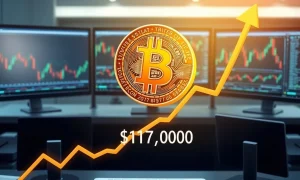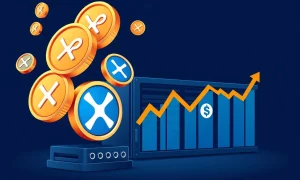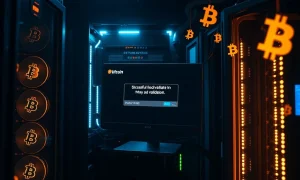Four major cryptocurrency investors, known as Hyperliquid whales, have sparked intense controversy after reportedly netting $47.5 million in profits during XPL’s dramatic 200% price surge. This extraordinary market movement has raised serious questions about market integrity on decentralized trading platforms.
Hyperliquid Whales Orchestrate Massive XPL Rally
Blockchain data reveals that four whale addresses executed coordinated trades that propelled Plasma blockchain’s XPL token from approximately $0.60 to over $1.80 within minutes. Consequently, this rapid price movement generated enormous profits for the orchestrators while causing significant losses for other traders.
The Mechanics of the Hyperliquid Whales’ Strategy
The largest wallet, identified as 0xb9c, allegedly functioned as the main orchestrator. This address accumulated millions of XPL tokens, effectively clearing the entire order book. Subsequently, the coordinated buying pressure triggered a massive short squeeze that liquidated numerous positions.
Key aspects of the strategy:
- Coordinated accumulation of XPL tokens
- Order book manipulation through large purchases
- Triggering of automated liquidations
- Strategic profit-taking during peak volatility
Victims and Losses in the Aftermath
While the Hyperliquid whales profited enormously, multiple traders suffered substantial losses. One unfortunate trader reported a $4.5 million loss on their XPL position. Additionally, another trader publicly acknowledged losing $2.5 million on a short position, vowing to avoid isolated markets permanently.
Justin Sun Connection Allegations
On-chain investigators have suggested Tron Network founder Justin Sun might be behind the primary whale wallet. Wallet 0xb9c, presumed associated with Sun, still maintains a substantial XPL position worth over $8.6 million with significant unrealized profits. However, these allegations remain unverified as investigations continue.
Historical Context and Platform Vulnerabilities
This incident marks the second major controversy for Hyperliquid within five months. Previously, the platform suffered a $6.26 million exploit involving JELLY memecoin due to liquidation parameter vulnerabilities. These repeated incidents highlight ongoing challenges facing decentralized exchanges.
Market Impact and Regulatory Implications
The Hyperliquid whales’ actions have ignited debates about market manipulation in decentralized finance. Furthermore, this event underscores the need for improved safeguards and transparency measures within DeFi ecosystems. Regulators and platform developers now face increased pressure to address these vulnerabilities.
Frequently Asked Questions
What exactly happened with Hyperliquid and XPL?
Four large investors coordinated buying activity that pushed XPL’s price up 200% in minutes, generating $47.5 million in profits while causing significant losses for other traders.
How did the whales manipulate the market?
They accumulated large XPL positions, cleared the order book, triggered a short squeeze, and liquidated other traders’ positions before taking profits during peak volatility.
Is Justin Sun really involved?
On-chain investigators suggest wallet 0xb9c may belong to Justin Sun, but this remains unconfirmed as neither Sun nor Hyperliquid have verified these claims.
What are the implications for decentralized exchanges?
This incident highlights vulnerabilities in DeFi platforms and raises questions about market integrity, potentially leading to increased regulatory scrutiny and platform improvements.
How can traders protect themselves from such manipulation?
Traders should avoid overly leveraged positions in illiquid markets, use stop-loss orders, and carefully research tokens before trading on decentralized platforms.
What has been Hyperliquid’s response?
Hyperliquid has not issued an official statement regarding these specific allegations, though the platform has addressed previous vulnerabilities through parameter adjustments.








